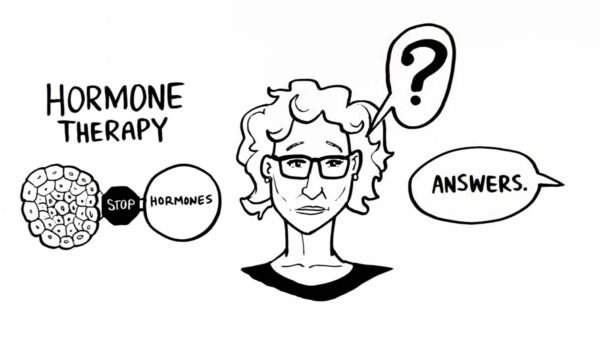What is Adrenoleukodystrophy? (ALD)
Adrenoleukodystrophy (ALD) is a rare genetic disorder that affects the brain, spinal cord and adrenal glands. It occurs when the body can’t break down certain fatty acids, cause to a buildup that damages nerve cells and disrupts communication in the brain and nervous system.
ALD is most commonly passed down from parents and mainly affects boys and men.
What are the Symptoms of Adrenoleukodystrophy?
Symptoms divide three main categories: cerebral ALD, adrenomyeloneuropathy (AMN) and adrenal insufficiency.
1. Cerebral ALD (affects the brain, often in children):
- Behavioral changes (e.g., hyperactivity, withdrawal or aggression)
- Learning difficulties and poor school performance
- Vision and hearing problems
- Difficulty with coordination and balance
- Seizures
- Progressive loss of speech and motor functions
2. Adrenomyeloneuropathy (AMN, usually in adults):
- Weakness and stiffness in the legs
- Difficulty walking or maintaining balance
- Loss of sensation in the lower limbs
- Pain or discomfort in the lower back or legs
- Problems with bladder and bowel control
- Sexual dysfunction
3. Adrenal Insufficiency (Addison’s disease, could seen in both children and adults):
- Fatigue and weakness
- Weight loss and poor appetite
- Low blood pressure and fainting
- Darkening of the skin (hyperpigmentation)
- Salt cravings
- Vomiting and abdominal pain



Statistics and Facts About Adrenoleukodystrophy (ALD)
Incidence
- ALD affects approximately 1 in 20,000 to 50,000 people worldwide.
- It is most common in males due to its inheritance pattern (X-linked).
Genetics
- ALD is caused by mutations in the ABCD1 gene, which is located on the X chromosome.
- Female carriers of the gene mutation have about a 50% chance of passing it on to their children.
Age of Onset
- Childhood cerebral ALD: Symptoms typically appear between the ages of 4 and 10 years.
- Adrenomyeloneuropathy (AMN): Symptoms usually appear in adulthood, typically between 20 and 50 years.
- Adrenal insufficiency (Addison’s disease): May occur at any age often preceding neurological symptoms.
Adrenal Insufficiency in ALD
- About 90% of males with ALD develop adrenal insufficiency.
- This condition often appears years before neurological symptoms.
Females with ALD
- Approximately 80% of female carriers develop symptoms of adrenomyeloneuropathy (AMN) later in life, typically after the age of 40 but they usually don’t experience the severe cerebral symptoms seen in males.
Prognosis
- Without treatment, children with cerebral ALD may experience rapid progression of symptoms cause to severe disability or death within 2 to 5 years of symptom onset.
- Early intervention, like a stem cell transplant, can significantly improve outcomes if performed before significant neurological damage.
Newborn Screening
- As of 2023, newborn screening for ALD is included in the recommended uniform screening panel (RUSP) in many regions, helping identify cases early.
- Early diagnosis through screening has been shown to improve outcomes significantly.
What are the Causes of Adrenoleukodystrophy?
- Fatty Acid Buildup:
- VLCFAs accumulate in cells, especially in the brain, spinal cord and adrenal glands.
- This buildup damages the protective myelin sheath around nerve cells, disrupting nerve signals.
- Adrenal Gland Damage:
- The accumulation of VLCFAs also affects the adrenal glands, impairing their ability to produce vital hormones like cortisol, cause to adrenal insufficiency.
Genetic Inheritance:
- X-Linked Inheritance:
- ALD is an X-linked condition, meaning the mutated gene is located on the X chromosome.
- Males (who have one X and one Y chromosome) are more severely affected because they lack a second X chromosome to compensate for the mutation.
- Females (who have two X chromosomes) are typically carriers but can develop milder symptoms later in life due to random inactivation of one X chromosome in cells.
Risk Factors:
- Family History:
- Having a parent with the ABCD1 mutation increases the risk of inheriting the condition.
- Gender:
- Males are at higher risk of developing severe symptoms due to the absence of a compensating second X chromosome.
What is x linked Adrenoleukodystrophy?
X-linked adrenoleukodystrophy (X-ALD) is a genetic disorder caused by mutations in the ABCD1 gene on the X chromosome. This condition affects the nervous system, adrenal glands and sometimes other tissues. Term “X-linked” refers to the inheritance pattern, as the mutated gene is located on the X chromosome.
What are the Treatment Options For Adrenoleukodystrophy?
Treatment options for adrenoleukodystrophy (ALD) focus on managing symptoms, slowing disease progression and addressing specific complications.
1. Stem Cell Transplantation
- What it is: A procedure where healthy stem cells are transplanted to replace damaged cells.
- Best for: Boys with early-stage childhood cerebral ALD before significant brain damage occurs (detected through MRI).
- Outcome: Could halt or slow disease progression if done early.
2. Gene Therapy
- What it is: Experimental treatments that involve inserting a functional copy of the mutated ABCD1 gene into the patient’s cells.
- Best for: Early-stage ALD in boys, offering an alternative to stem cell transplantation.
- Outcome: Promising results in ongoing clinical trials but not yet widely available.
3. Dietary Therapy (Lorenzo’s Oil)
- What it is: A special mixture of fatty acids designed to reduce very long-chain fatty acid (VLCFA) levels in the blood.
- Best for: Preventing symptoms in asymptomatic people identified early (e.g., through newborn screening).
- Outcome: Effectiveness is debated; usually combined with other treatments.
4. Hormone Replacement Therapy
- What it is: Corticosteroids (e.g., hydrocortisone) to treat adrenal insufficiency (Addison’s disease), a common complication of ALD.
- Best for: People with adrenal gland dysfunction.
- Outcome: Improves energy levels and prevents life-threatening adrenal crises.
5. Symptom Management and Supportive Care
- Physical therapy: Helps maintain mobility and manage muscle stiffness, particularly in adults with adrenomyeloneuropathy (AMN).
- Speech and occupational therapy: Assists with communication and daily activities as symptoms progress.
- Seizure management: Anticonvulsant medications for people with seizures.
- Psychological support: Counseling for patients and families coping with the disease.
6. Experimental Treatments
- Newborn Screening: Early diagnosis through state or regional screening programs enables timely intervention.
- Clinical Trials: Emerging therapies, such as advanced gene editing and enzyme replacement, are being studied.
7. Regular Monitoring
- Routine MRI scans: To monitor brain changes.
- Regular blood tests: To check VLCFA levels and adrenal gland function.
Prognosis with Treatment:
- Early diagnosis, especially with stem cell transplantation or gene therapy, can significantly improve outcomes for childhood cerebral ALD.
- For adults with AMN, treatment focuses on managing symptoms and improving quality of life.



Advice For Living With Adrenoleukodystrophy
1. Early and Regular Monitoring
- Seek Early Diagnosis: If there is a family history of ALD, consider genetic testing and newborn screening for early diagnosis.
- Routine Checkups: Schedule regular medical appointments to monitor neurological function, adrenal gland health and disease progression.
- Adrenal Health: Be vigilant for symptoms of adrenal insufficiency (e.g., fatigue, low blood pressure) and take prescribed hormone replacement therapy if needed.
2. Work Closely With Specialists
- Consult with a team of specialists, such as:
- Neurologists
- Endocrinologists
- Physical and occupational therapists
- A coordinated care approach ensures all aspects of the condition are addressed.
3. Adopt a Healthy Lifestyle
- Diet: Follow your doctor’s recommendations. For some, Lorenzo’s Oil or dietary modifications may help manage very long-chain fatty acids.
- Exercise: Engage in gentle, low-impact exercises (e.g., yoga, swimming) to maintain mobility and muscle strength, especially for adults with AMN.
- Mental Health: Practice stress-reducing activities like meditation or mindfulness to cope with the emotional impact of ALD.
4. Leverage Support Systems
- Family and Friends: Build a strong support network to help with emotional and practical challenges.
- Support Groups: Join ALD-specific communities or forums to connect with others who share similar experiences.
- Counseling: Consider therapy for coping with anxiety, depression or caregiving stress.
5. Stay Informed
- Educate Yourself: Learn about ALD to understand symptoms, treatments and research advancements.
- Advocate: Work with your healthcare provider to explore all available treatment options, including clinical trials.
6. Be Prepared for Emergencies
- Medical ID: Wear a medical bracelet or carry a card that states you have ALD and/or adrenal insufficiency.
- Emergency Plan: Have a plan in place for adrenal crises, including access to emergency corticosteroid injections.
7. Focus on Quality of Life
- Set Realistic Goals: Prioritize achievable activities and celebrate small victories.
- Create a Routine: Structure daily life around medical care, physical therapy and enjoyable activities.
- Adapt to Changes: Use mobility aids or adaptive devices if needed to maintain independence.
8. Engage in Research and Advocacy
- Clinical Trials: Explore eligibility for experimental treatments like gene therapy.
- Advocate for Awareness: Help raise awareness about ALD and the importance of newborn screening to support other families.
You can find details most effective Adrenoleukodystrophy treatment option in below:
We wish healthy life to you.

